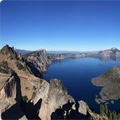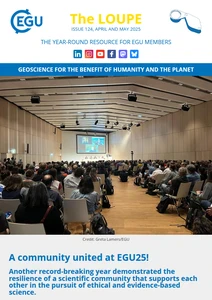President: João C. Duarte
(Emailts@egu.eu)
Deputy President: Paola Vannucchi
(Email)
ECS Representative: Riccardo Lanari
(Emailecs-ts@egu.eu)
The Division on Tectonics and Structural Geology (TS) investigates rock deformation at all scales with the aim to decipher its complex relationships with Earth dynamics. We use natural observations, including mapping, remote sensing and seismics, and experimental methods. The division is highly interdisciplinary, with strong ties with other EGU divisions including GD, EMRP, SM, SSP, GM, G, and GMPV.
Latest posts from the TS blog

Queer Quarterly: What does queer visibility mean in academia?
Queer Quarterly is the blog series of the EGU pride group, a LGBTQIA+ team of geoscientists engaged to uphold and improve the rights of the community in the EGU organization. This week’s post is dedicated to allyship: how people outside of the community can support our efforts. The term LGBTQIA+ is the abbreviation for Lesbian, Gay, Bisexual, Transgender, Queer, Intersex, and Asexual. The additional “+” stands for all of the other identities not encompassed in the short acronym. An umbrella …
Read more

TS Must-Read – Rowe and Griffith (2015) Do faults preserve a record of seismic slip: A second opinion
Earthquakes shake the Earth almost every day, but what exactly happens within rocks during these seismic events is a matter of debate in the scientific community. The article “Do faults preserve a record of seismic slip: A second opinion,” published in 2015, offers a thoughtful review of the sure and potential records of seismic slip in rocks. The paper examines the notion that rocks in ancient faults, now exposed at the surface, act as archives of past seismic slip events. …
Read more

Geomythology. Crater Lake: from Love, War and/or natural phenomena
The worldwide relatively frequent recurrence of volcanic eruptions, earthquakes and tsunamis, as well as their strong impact on society make them the most common sources of myths. The most intriguing part is how different cultures describe relatively similar events in very different ways. Among them, the myths at the base of the origins of the Crater Lake in Oregon (USA), mainly orally inherited from the Klamath people, are really fascinating. Volcanic origins of Crater Lake Crater Lake covers a huge …
Read more
Recent awardees

- 2025
- Stephan Mueller Medal
The 2025 Stephan Mueller Medal is awarded to
Heidrun Kopp for innovative research and groundbreaking discoveries in convergent margin systems, large earthquake processes, active fault slip, magmatic arc systems and geohazards.
Read more

- 2025
- Arne Richter Award for Outstanding Early Career Scientists
The 2025 Arne Richter Award for Outstanding Early Career Scientists is awarded to
Renelle Dubosq for pioneering nanogeology research, advancing our understanding of plastic deformation in minerals, using innovative 2D and 3D analytical techniques in tectonics and structural geology.
Read more

- 2024
- Stephan Mueller Medal
The 2024 Stephan Mueller Medal is awarded to
Yann Klinger for his exceptional interdisciplinary contribution to the fields of seismology and palaeo-seismology, in particular, for his groundbreaking development of space seismology.
Read more

- 2024
- Outstanding Student and PhD candidate Presentation (OSPP) Award
The 2024 Outstanding Student and PhD candidate Presentation (OSPP) Award is awarded to
Julia Schmitz Fabric analyses of fine-grained glacier salt (Kuh-e-Namak, Dashti, southern Iran)
Read more

- 2024
- Outstanding Student and PhD candidate Presentation (OSPP) Award
The 2024 Outstanding Student and PhD candidate Presentation (OSPP) Award is awarded to
Patrick Bianchi Exploring fault preparation and earthquake nucleation from the laboratory
Read more
Current issue of the EGU newsletter









